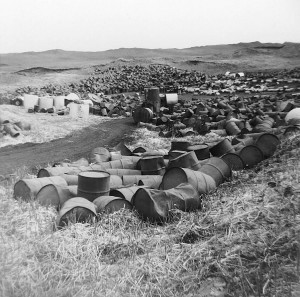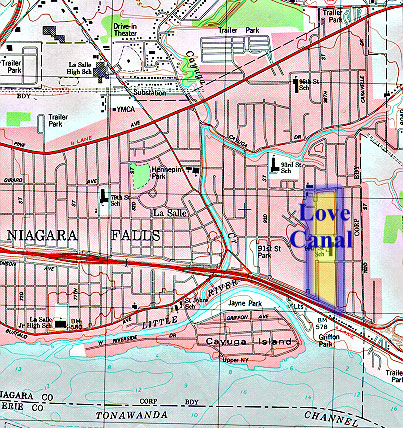 This week the New York Times features a “retro report” on Love Canal, one of the most infamous environmental disasters in US history and the incident that spurred the creation of the EPA’s Superfund program.
This week the New York Times features a “retro report” on Love Canal, one of the most infamous environmental disasters in US history and the incident that spurred the creation of the EPA’s Superfund program.
Far from a closed book, the legacy and implications of Love Canal are still playing out. Of great significance in the history of the American environmental justice movement, Love Canal also demonstrates the difficulty and complexity involved in scientifically assessing the health impacts of environmental toxins on a relatively small population.
The above map is one of the many images collected in the online resource, Lessons of Love Canal, developed in 2003 by the Boston University School of Public Health. As noted in the site’s introduction:
Many community groups around the U.S. request health studies to examine associations between environmental contamination and perceived health problems. Love Canal and other community battles have taught us that how studies are conducted and by whom is crucial to deriving useful and credible information. At the Boston University School of Public Health (BUSPH), we push for community concerns and insights to be part of the study process from the beginning to the end.
Some Love Canal studies have become models for the way we do community environmental health studies today. We hope this collection of lessons learned over three decades of controversy at Love Canal represents initial steps toward building a resource for future community-based studies.
